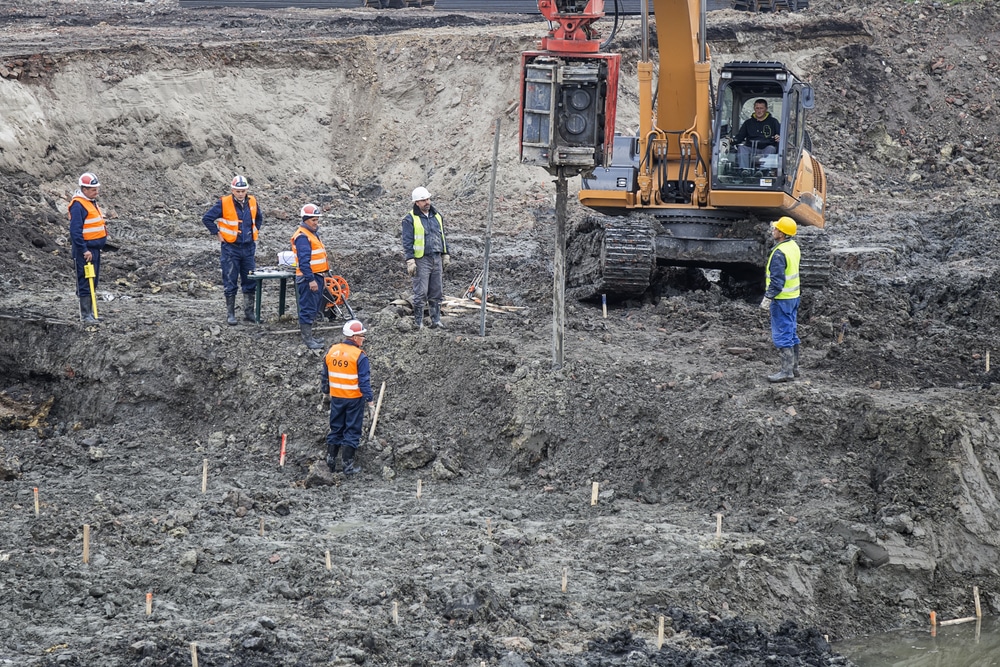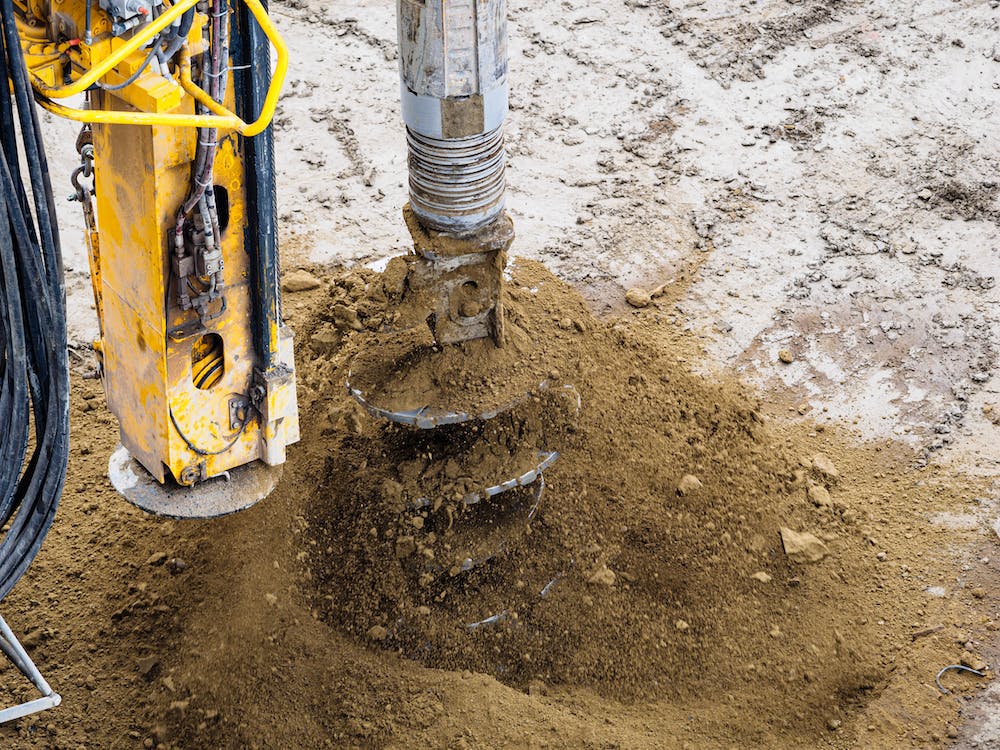Exploring the Duty of a Geotechnical Engineer Description and Responsibilities
Wiki Article
The Significance of Geotechnical Engineering in Resolving Ecological Challenges and Enhancing Building And Construction Safety
Geotechnical engineering offers as a cornerstone in the crossway of environmental stewardship and building safety, offering important understandings into the actions of dirt and rock under various conditions. This technique not only addresses pressing environmental obstacles such as dirt erosion and groundwater defense but additionally boosts the effectiveness of framework against all-natural hazards. By executing critical website examinations and customized mitigation steps, geotechnical designers play a vital duty in safeguarding both human lives and eco-friendly stability. The complexities of these difficulties increase essential questions about the future instructions of this field and its ramifications for lasting development.
Role of Geotechnical Engineering
Geotechnical design plays a crucial duty in the style and building and construction of framework by addressing the behavior of soil and rock products under various conditions. This area of engineering is essential for understanding the communication in between structures and the ground, that includes establishing the load-bearing ability of soil, assessing stability, and predicting possible negotiation or failing.Geotechnical engineers are accountable for conducting website examinations, which involve sampling and testing soil and rock to gather information on their physical and chemical homes. This details is important for making structures, preserving walls, and other earth-retaining structures that guarantee safety and security and longevity. Additionally, geotechnical engineering educates the selection of appropriate building methods and products, thereby lessening dangers related to dirt habits.
Additionally, the assimilation of geotechnical engineering concepts into city preparation and ecological administration is important for dealing with challenges such as ground contamination and groundwater monitoring. By recognizing geotechnical factors, designers can create lasting services that boost the strength of framework versus natural threats, while likewise advertising environmental stewardship. Inevitably, the function of geotechnical engineering is vital for achieving secure, long lasting, and environmentally aware building and construction techniques.
Dirt Erosion Mitigation
Dirt erosion presents a substantial risk to both environmental security and infrastructure integrity, impacting about 24 billion bunches of productive dirt shed annually worldwide. This sensation is exacerbated by factors such as logging, urbanization, and poor farming techniques. Geotechnical design plays a crucial duty in creating efficient dirt disintegration reduction methods that guard both the atmosphere and building and construction jobs.One method requires the execution of disintegration control methods such as plant life growing, which maintains soil through origin systems. In addition, the building of keeping terraces and wall surfaces can successfully decrease surface area overflow and shield prone locations from disintegration. Appropriate drain design is also important; it decreases water build-up and directs excess drainage far from essential structures.
Moreover, geotechnical engineers utilize dirt stabilization strategies, such as the application of geotextiles and eco-friendly mats, to improve soil cohesion and stop destruction - geotechnical engineer description. Routine monitoring and assessment of erosion-prone websites allow prompt interventions, guaranteeing long-lasting sustainability. By incorporating these strategies, geotechnical engineering not just mitigates the influences of dirt erosion however likewise adds to the resilience of framework against ecological obstacles, inevitably cultivating a much safer and more lasting developed setting
Groundwater Defense Techniques
Groundwater offers as an essential source for drinking water, agriculture, and industrial procedures, making its protection vital for environmental sustainability and public wellness. Efficient groundwater security techniques are critical in reducing contamination threats and making sure the long life of this source.
Regular tracking of groundwater quality is also vital, allowing very early detection of contamination sources and facilitating prompt removal initiatives. Employing sophisticated modern technologies, such as geophysical studies and remote picking up, help in determining possible dangers to groundwater reserves.
Additionally, public education and learning and stakeholder engagement are vital, promoting community support for groundwater defense campaigns. about geotechnical engineering. By integrating regulatory procedures, technological advancements, and neighborhood involvement, we can develop a thorough structure that safeguards groundwater resources while advertising lasting growth and building practices
Landslide Threat Administration
Landslides present significant risks to both human safety and framework, making efficient threat administration techniques crucial. Geotechnical engineering plays a crucial role in determining, analyzing, and mitigating landslide threats. A thorough understanding of slope stability, dirt technicians, and hydrology is vital for establishing reliable threat administration plans.The primary step in landslide risk management involves detailed website examinations, which include geological mapping and soil screening. These examinations aid designers review the capacity for landslides by determining critical elements such as incline angles, soil make-up, and water web content. Making use of advanced technologies such as remote noticing and geophysical surveys can boost the accuracy of these assessments.
When threats are identified, appropriate reduction procedures can be implemented. These might consist of design services such as preserving wall surfaces, drain systems, and slope stablizing techniques. Keeping track of systems need to be developed to spot signs of ground motion and adjustments in water degrees, allowing for proactive interventions.

Enhancing Building Security
Building websites frequently offer a myriad of dangers that can threaten worker safety and security and job integrity. Geotechnical design plays a crucial role in enhancing building and construction safety and security by offering important insights into subsurface conditions. With detailed soil and rock evaluation, geotechnical designers can identify possible threats, such as dirt instability, groundwater concerns, and seismic susceptabilities, which may compromise the safety of building and construction tasks.Implementing geotechnical solutions, such as appropriate structure design and the usage of preserving frameworks, reduces these threats significantly. These remedies not only ensure the stability of the frameworks being constructed however additionally create a much safer working setting for building workers. Additionally, strenuous surveillance and assessment of site problems throughout the construction procedure are vital. Using innovative technologies like ground-penetrating radar and inclinometer systems allows real-time data collection, permitting timely interventions when hazards are found.
In addition, promoting a society of security with training and adherence to developed safety methods additionally improves construction website safety. By incorporating geotechnical knowledge into the planning and execution stages, construction tasks can attain greater security criteria, inevitably securing employees and making certain effective job conclusion.
Verdict
In conclusion, geotechnical engineering all about geotechnical engineering offers as an essential technique in advertising and dealing with ecological difficulties building safety. With efficient soil erosion reduction, groundwater security methods, and landslide risk management, geotechnical designers add to the development of durable facilities.Geotechnical design serves as a foundation in the junction of ecological stewardship and building safety and security, offering critical insights into the habits of soil and rock under various conditions. Geotechnical engineering informs the selection of ideal construction methods and products, thus minimizing threats linked with dirt actions.
Geotechnical design plays a crucial role in creating effective soil disintegration mitigation approaches that secure both the setting and building jobs.
Additionally, geotechnical designers employ soil stablizing strategies, such as the application of geotextiles and naturally degradable mats, to improve dirt cohesion and avoid degradation. Via extensive dirt and rock evaluation, geotechnical designers can determine potential dangers, such as soil instability, groundwater problems, and seismic vulnerabilities, which may jeopardize the safety of building and construction tasks.
Report this wiki page